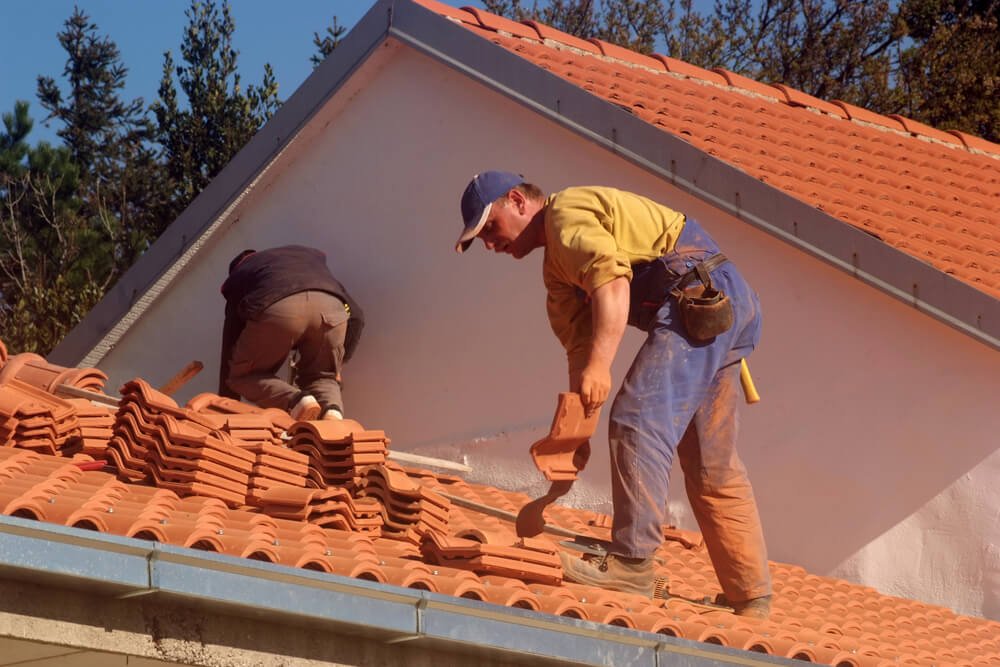Key Steps to Install a New Roof: A Comprehensive Guide
Installing a new roof is a major investment that demands thorough planning and precise execution. This undertaking is not just about laying down new shingles; it involves a detailed process that ensures the roof’s durability and functionality. Whether you’re replacing an old roof that’s past its prime or installing one for the first time on a new construction, having a clear understanding of the key steps involved in roof installation in USA is crucial.
These steps include assessing the current roof’s condition, selecting the right materials, hiring a reputable contractor, and ensuring proper installation techniques. Understanding these fundamentals will help you steer clear of typical problems, avoid expensive errors, and guarantee a smooth and successful completion of your roofing project that will leave your property well-protected for many years to come.
Let’s talk about the major key points:
You will be guided through all of the necessary stages to build a new roof by these thorough factors.
Planning and Preparation-
Assessing Your Needs:
- Determine if you need a complete roof replacement or just repairs. Keep an eye out for damage indicators like leaks, missing shingles, or drooping sections.
Budgeting:
- Establish a budget for your roofing project. Take into account the price of supplies, labor, licenses, and unforeseen charges.
Choosing Materials:
- Select the type of roofing material that best suits your needs, climate, and aesthetic preferences. Metal, tile, wood shakes, and asphalt shingles are typical choices.
Hiring a Contractor:
- Research and hire a reputable roofing contractor. Check for licenses, insurance, and references. Gather several quotes to compare prices and services.
Removing the Old Roof-
Safety Precautions:
- Ensure the work area is safe by using appropriate safety gear, such as gloves, goggles, and harnesses. Secure the area to prevent debris from causing harm.
Removing Shingles:
- Start by removing the old shingles. To remove the shingles, use a pry bar or a roofing shovel. Remove nails and staples to prepare for the new roof installation.
Inspecting the Decking:
- Examine the roof decking for any damage or rot. In order to guarantee a strong base for the new roof, replace any damaged components.
Installing Underlayment and Flashing-
Underlayment:
- Install a waterproof underlayment over the roof decking. This layer provides an additional barrier against moisture and helps prevent leaks.
Flashing:
- Put flashing in place around vents, chimneys, and other roof penetrations. Water is kept from leaking into these weak spots by flashing.
Installing the New Roofing Material-
Starter Shingles:
- Begin by installing starter shingles along the eaves. These shingles provide a secure base for the rest of the roof and help prevent water infiltration.
Laying Shingles:
- As directed by the manufacturer, install the new shingles. To guarantee adequate coverage, begin at the bottom and work your way up, overlapping each row as you go.
Securing Shingles:
- Nail the shingles in place, ensuring they are securely fastened. Use roofing nails and follow a consistent nailing pattern to maintain uniformity.
Finishing Touches-
Ridge Cap Shingles:
- Install ridge cap shingles along the roof’s peak. These shingles provide extra protection at the highest point of the roof and enhance its appearance.
Sealing:
- Apply roofing cement to seal any exposed nails and vulnerable areas. By taking this action, water penetration into the roof is lessened.
Cleanup:
- Remove any debris from the roof and surrounding area. Ensure all nails and sharp objects are safely disposed of to prevent injuries.
Final Inspection-
Quality Check:
- Conduct a thorough inspection of the new roof. Check for proper alignment, secure fastening, and any potential issues.
Addressing Issues:
- Address any concerns or defects immediately. Ensure that the roof meets your expectations and the contractor’s standards.
Warranty:
- Review the warranty provided by the roofing material manufacturer and the contractor. Comprehend the terms and conditions to safeguard your investment.
Conclusion:
Installing a new roof is a significant investment that demands meticulous planning and execution. This process goes beyond merely laying down new shingles; it involves a series of detailed steps that ensure the roof’s durability and functionality. Whether you’re replacing an old roof or installing one for the first time, understanding the key steps in roofing services in USA is essential.
FAQ:-
1. Why is planning and preparation important before installing a new roof?
Planning and preparation are crucial as they help you assess your roofing needs, establish a budget, choose the right materials, and hire a reputable contractor. Proper planning ensures a smooth project and helps prevent unexpected issues and expenses.
2. How do I know if I need a complete roof replacement or just repairs?
Keep an eye out for damage indicators like leaks, missing shingles, or drooping sections. If the damage is extensive or if the roof is nearing the end of its lifespan, a complete replacement might be necessary. For industrial roofing in USA, a professional inspection can provide a definitive answer.
3. Which kinds of roofing materials am I able to select?
Common roofing materials include asphalt shingles, metal, tile, and wood shakes. Each material has its advantages and is suitable for different climates and aesthetic preferences.
4. How do I find a reputable roofing contractor?
Research and hire a contractor with proper licenses, insurance, and good references. Obtain several quotes in order to compare prices and services. Finding a trustworthy contractor can also be aided by referrals from friends and family and internet reviews.
5. What safety precautions should I take when removing an old roof?
Ensure the work area is safe by using appropriate safety gear, such as gloves, goggles, and harnesses. Secure the area to prevent debris from causing harm. It’s also wise to have someone assist you during the removal process.
6. Why is it important to inspect the roof decking?
It is crucial to examine the roof decking in order to spot any rot or damage. The stability and endurance of the new roof depend heavily on a strong base. Before starting the installation, replace any broken pieces.
7. What is the purpose of underlayment and flashing?
The underlayment provides an additional moisture barrier to prevent leaks, while flashing protects vulnerable areas around roof penetrations, such as chimneys and vents, from water infiltration.
8. How do I properly install new shingles?
Start with starter shingles along the eaves, then lay the shingles from the bottom up, overlapping each row. Secure the shingles with roofing nails, following a consistent nailing pattern to ensure they are firmly attached.
9. What are ridge cap shingles, and why are they important?
Ridge cap shingles are installed along the roof’s peak to provide extra protection and enhance the roof’s appearance. They cover the ridge line and prevent water from seeping in at the highest point of the roof.
10. How can I ensure the new roof installation is done correctly?
Conduct a thorough inspection of the new roof, checking for proper alignment, secure fastening, and any potential issues. Address any concerns immediately and review the warranties provided by the material manufacturer and the contractor.


